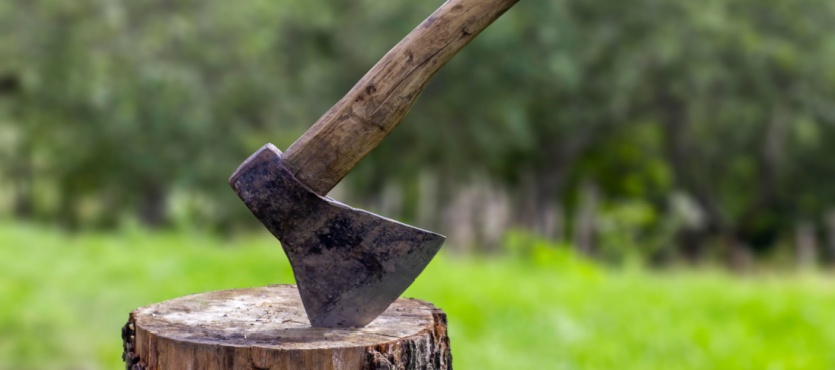Axe throwing, a sport that has recently gained widespread popularity, has deep historical roots that trace back centuries. What started as a practical skill for survival and warfare has evolved into a competitive and recreational activity enjoyed by people around the world. Let’s explore the rich history and evolution of axe throwing, from its ancient origins to its modern-day resurgence as a popular pastime.
Ancient Origins
The history of axe throwing dates back to ancient times when axes were primarily used as tools for hunting and warfare. Early civilizations, such as the Celts and the Vikings, utilized axes not only for their practical purposes but also as weapons. These early axes were often made of stone, bronze, or iron, with designs varying significantly based on their intended use.
The Celts, a group of tribal societies in Iron Age and Medieval Europe, are known to have used axes both as tools and weapons. The Celts were skilled metalworkers, creating axes with iron blades that were both durable and effective. It is believed that Celtic warriors would occasionally throw their axes in battle as a means of disarming or injuring their enemies before closing in for hand-to-hand combat.
Similarly, the Vikings, seafaring Norse people from the late eighth to early eleventh century, were renowned for their use of axes in warfare. The Viking throwing axe, known as the “francisca,” was a feared weapon on the battlefield. Vikings would throw these axes at their enemies in the initial stages of an attack, using their superior range and power to disrupt enemy lines.
Axe Throwing in the Middle Ages and Beyond
During the Middle Ages, axe throwing continued to be used in warfare but also began to emerge as a skillful sport among soldiers and knights. Medieval tournaments often included axe throwing competitions, where participants showcased their accuracy and strength. These competitions were not only a test of skill but also a form of entertainment for the nobility and commoners alike.
As the Renaissance period unfolded, the use of axes in warfare began to decline with the advent of more advanced weaponry, such as firearms. However, axe throwing persisted as a popular sport and recreational activity. In rural communities across Europe, axe throwing competitions became a staple of local festivals and gatherings. These events fostered a sense of community and camaraderie among participants and spectators.
The Modern Revival
The modern revival of axe throwing can be traced back to the mid-20th century, with the rise of lumberjack competitions in North America. These competitions celebrated the skills and traditions of lumberjacks, including axe throwing, log rolling, and tree climbing. The popularity of these events paved the way for the establishment of axe throwing as a competitive sport.
The late 1990s and early 2000s saw the formation of organized axe throwing leagues, particularly in Canada. The Backyard Axe Throwing League (BATL), founded in Toronto in 2006, played a pivotal role in popularizing the sport. BATL’s founder, Matt Wilson, started the league in his backyard, bringing friends together for friendly competitions. The league’s success led to the opening of dedicated axe throwing venues, where people could participate in the sport in a safe and controlled environment.
As axe throwing gained traction in Canada, it quickly spread to other parts of the world, including the United States, Europe, and Australia. The establishment of the World Axe Throwing League (WATL) in 2017 further propelled the sport’s global reach. WATL standardized the rules and regulations for competitive axe throwing, allowing participants from different countries to compete on an equal footing.
Modern-Day Axe Throwing
Today, axe throwing is enjoyed by people of all ages and backgrounds. Dedicated axe throwing venues have sprung up in cities worldwide, offering a unique and exciting recreational activity. These venues provide a safe environment for participants to learn and practice their skills, with trained staff on hand to ensure safety and provide instruction.
The appeal of axe throwing lies in its simplicity and accessibility. Unlike many sports that require specialized equipment or training, axe throwing can be enjoyed by anyone with minimal instruction. The satisfying thud of an axe hitting the target, coupled with the thrill of competition, makes for an exhilarating experience.
Axe throwing has also become a popular social activity, with many venues offering group bookings for events such as birthday parties, corporate team-building exercises, and bachelor/bachelorette parties. The combination of friendly competition and camaraderie makes axe throwing an ideal choice for group outings.
Tips for Safe Axe Throwing
While axe throwing is a thrilling activity, safety should always be the top priority. Here are some essential safety tips to keep in mind:
- Wear Appropriate Clothing: Ensure you wear closed-toe shoes and avoid loose clothing that could interfere with your throw.
- Follow Instructions: Listen carefully to the safety briefing provided by the staff and follow all instructions.
- Respect the Boundaries: Stay within designated areas and never cross the throwing line while axes are being thrown.
- Use Proper Technique: Use the proper stance, grip, and throwing motion to maintain control and accuracy.
Embrace the Tradition at Axe Niagara
The history and evolution of axe throwing is a testament to the enduring appeal of this ancient skill. From its origins as a practical tool and weapon to its modern incarnation as a popular sport and recreational activity, axe throwing has captured the imagination of people across the ages. Whether you’re a seasoned thrower or a newcomer to the sport, the thrill of axe throwing at venues like Axe Niagara offer a unique and memorable experience. Join us at Axe Niagara to become part of this rich tradition and enjoy the excitement of mastering your throw. For more information or to book your session, contact us.

